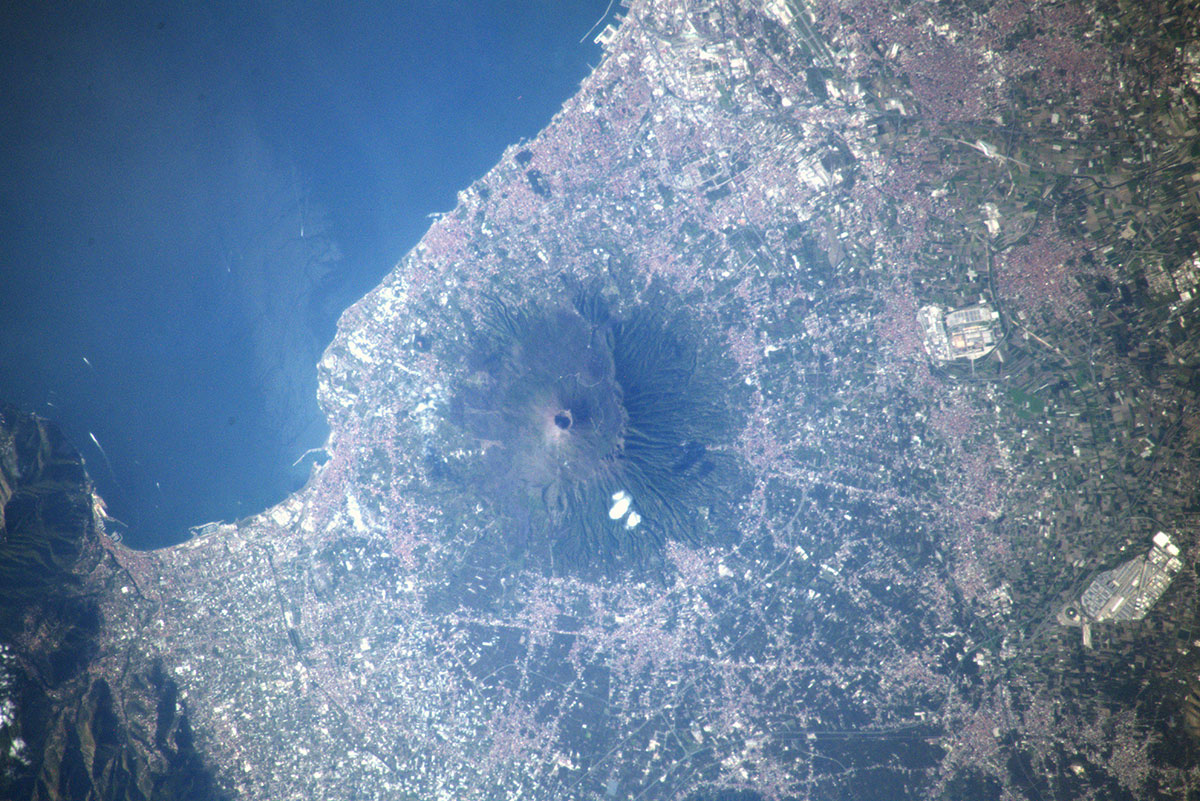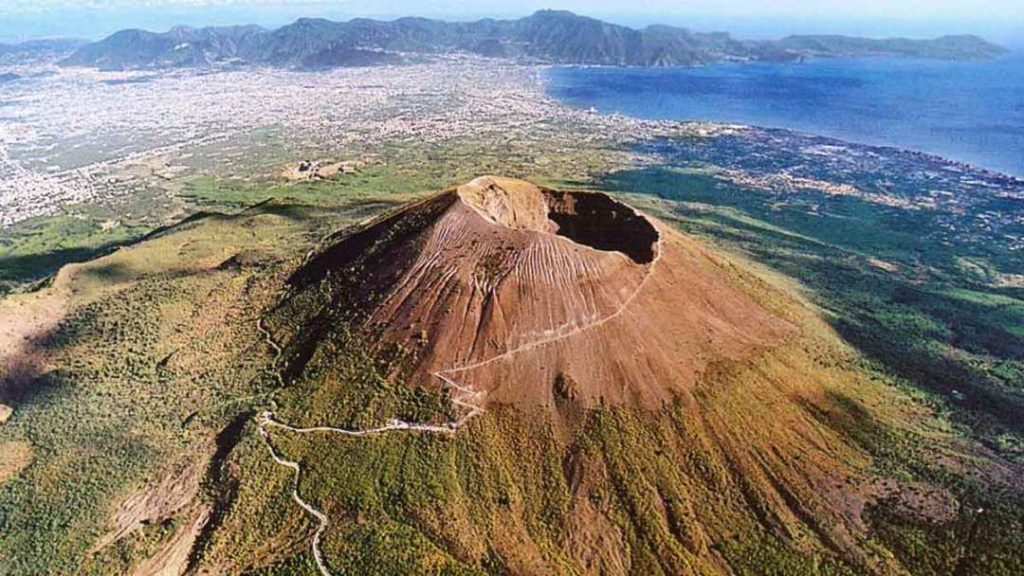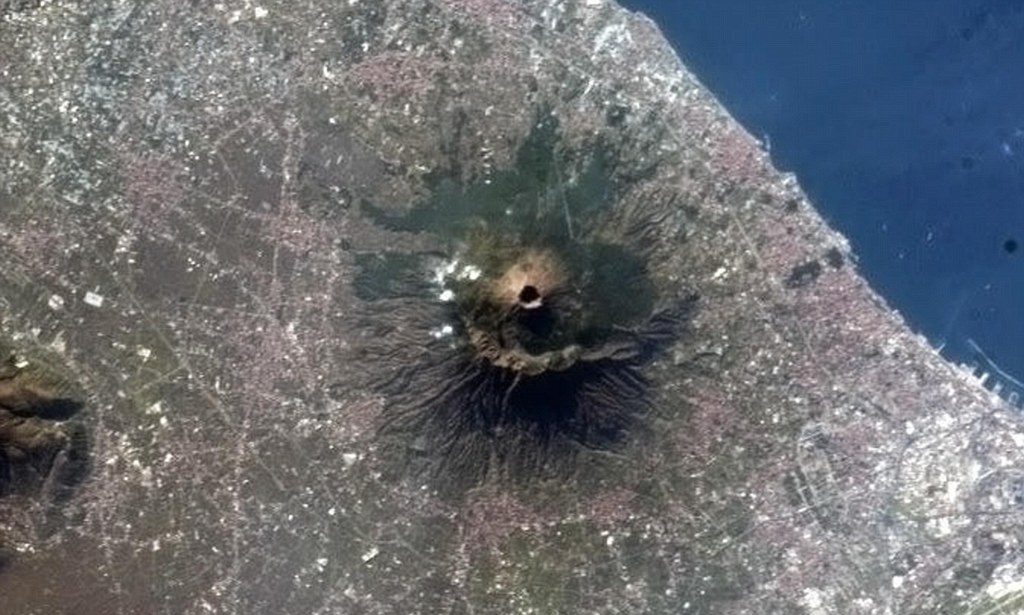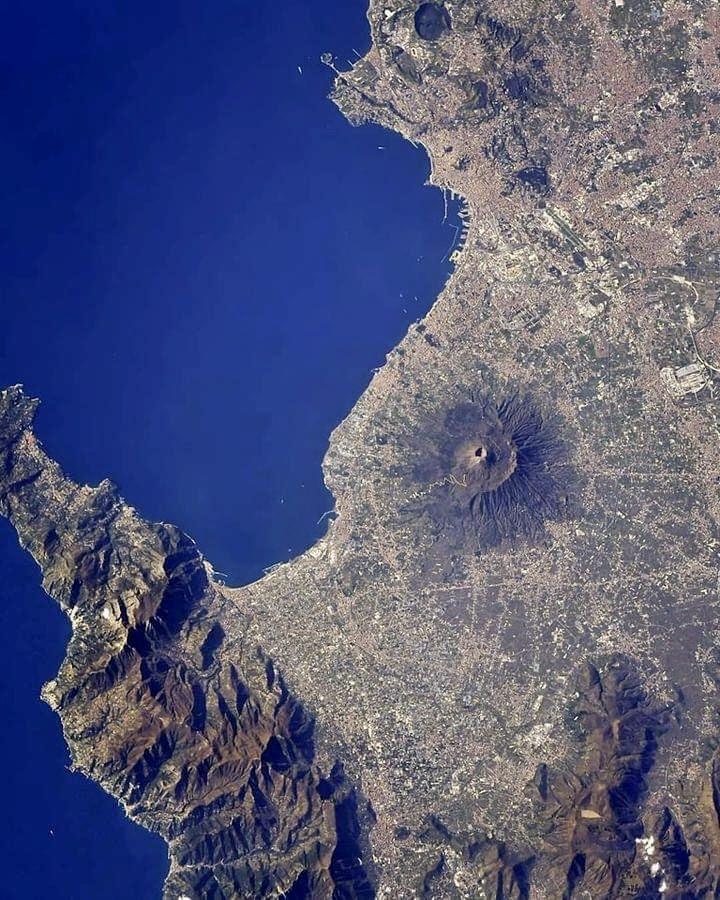Introduction
Mount Vesuvius, a symbol of both natural beauty and catastrophic power, has been captured in breathtaking detail by astronaut Andreas Mogensen from the International Space Station (ISS). This image, taken during Mogensen’s Huginn mission, provides a unique view of the iconic Italian volcano, juxtaposed against the vibrant landscapes of Naples and the surrounding region. Beyond its visual appeal, the photograph offers an opportunity to reflect on Vesuvius’ geological and historical significance.

Formation and Geology of Mount Vesuvius
Origins of the Campanian Arc
Mount Vesuvius is part of the Campanian volcanic arc, a geological formation created by the collision of the African and Eurasian tectonic plates. This dynamic interaction has shaped southern Italy’s landscape, creating fertile soils rich in volcanic minerals. These conditions have made the region renowned for its agriculture, particularly its tomatoes, which are considered some of the best in the world.

A Dormant but Active Threat
While Vesuvius has not erupted since 1944, it remains an active volcano. Its towering crater, prominently visible in Mogensen’s photograph, is a stark reminder of the forces that lie beneath the Earth’s surface. The nearby Phlegraean Fields, another volcanic region west of Naples, adds to the area’s geological vibrancy, with ongoing seismic activity hinting at the subterranean power.
Historical Significance
The Catastrophic Eruption of 79 AD
Vesuvius is best known for its devastating eruption in 79 AD, which obliterated the Roman cities of Pompeii and Herculaneum. This sudden disaster buried the cities under layers of ash and pumice, creating a unique archaeological record of Roman life frozen in time. Excavations of these sites have provided invaluable insights into ancient urban planning, daily life, and culture.

A Timeless Symbol
Through Mogensen’s lens, Vesuvius transcends its tragic history to become a majestic monument of Earth’s power and beauty. The volcano’s dual nature—capable of both destruction and creation—captures the imagination and serves as a reminder of humanity’s resilience in the face of nature’s unpredictability.
A View from the ISS
The Unique Perspective
From the ISS, Mogensen captured the full scale of Vesuvius in its modern context. The photograph highlights the contrast between the ancient volcano and the bustling cityscapes of Naples below, underscoring the coexistence of history and modernity.

Inspiring Awe and Reflection
This vantage point transforms Vesuvius from a symbol of destruction into a natural wonder, emphasizing the Earth’s dynamic forces. Mogensen’s image inspires awe not only for the geological phenomena but also for the ability of humanity to explore and understand them from space.
Conclusion
Mount Vesuvius remains one of the world’s most fascinating natural landmarks, blending geological, historical, and cultural significance. Mogensen’s stunning image brings this legacy into sharp focus, reminding us of the delicate balance between human civilization and the powerful forces of nature.

